Overview
The Quick Menu is a lightweight interface for interacting with PiecesOS, located in your menu bar (macOS & Linux) or system tray (Windows).
This popover lets you manage your PiecesOS settings, Long-Term Memory (LTM-2.7) Engine configurations, and application integrations.
It enables you to monitor PiecesOS status, toggle memory and AI processing settings, and access critical resources without launching a separate application, among other features.
For Linux users, available options are currently more limited.
Quick Menu Actions
There are several views and buttons you can click to expand or enter in the PiecesOS Quick Menu on macOS and Windows:
| View / Button | Explanation |
|---|---|
| Account | You can log in or log out of your Pieces Account. |
| Version | Check for and automatically install available PiecesOS updates. |
| Long-Term Memory Engine | Enable or disable LTM. |
| Long-Term Memory Access Control | Enable or disable sources from which LTM captures contextual workflow data. |
| Settings | Adjust settings like launch on login, enabled Pieces products, ML processing configurations, telemetry permissions, or optimize RAM usage. |
| Activity | View recent LTM activity, like most recent Copilot Chats, people, and related websites. |
| Resources | Find links to documentation and Pieces social accounts. |
PiecesOS Quick Menu on macOS
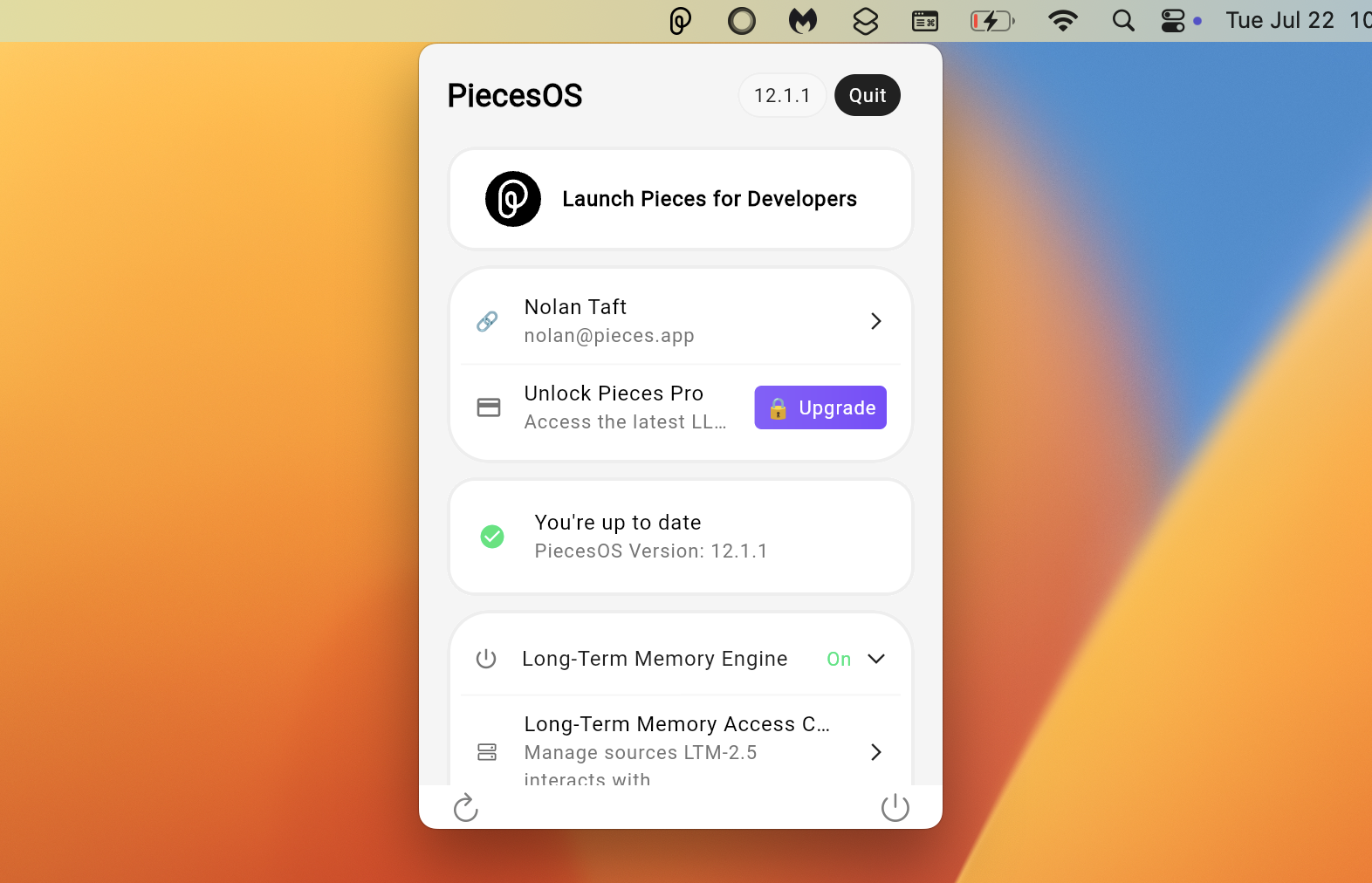
Media for this Quick Menu documentation has been captured exclusively on macOS.
Logging In & Out
At the top of the Quick Menu, you can log in or log out of your Pieces account. Logging in allows access to cloud-connected features, such as:
Syncing preferences across devices
Cloud model processing (if enabled)
Accessing saved snippets across devices
If you log out, PiecesOS will continue running locally with saved configurations but will not sync to the cloud.

Checking for Updates
Directly under your account information, the Quick Menu displays your current PiecesOS version and whether it is up to date.
If a new update is available, you will see an
Update Availablebutton. Clicking it will initiate the update process.If PiecesOS is up to date, the menu will display a green check mark and show the active version—i.e., 11.0.4.
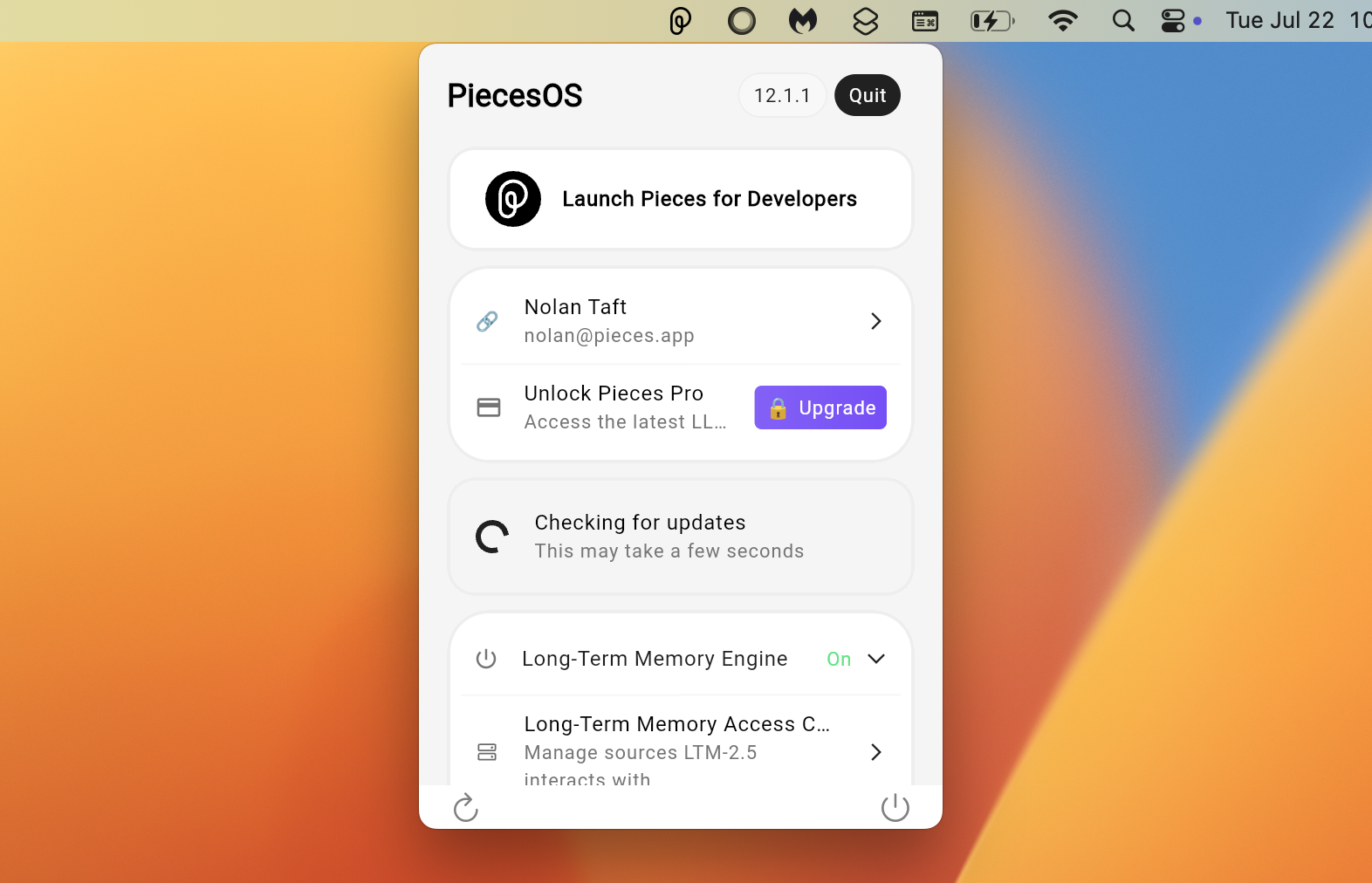
LTM-2.7 Engine
LTM is PiecesOS’s core memory engine, capturing workflow context locally to enhance productivity.
You can toggle it on or off from the Quick Menu.
Enabling, Pausing & Disabling LTM
You can toggle the LTM engine On or Off from the Quick Menu.
To do so, click the Pieces logo in your taskbar or toolbar, and click Enable Long-Term Memory Engine to enable it.

Conversely, you can click the green On button to display a drop-down menu that lets you disable the LTM temporarily in minute increments or altogether.

Long-Term Memory Access Control
This section allows you to manage which applications and sources LTM captures data from through two menus:
- Enabled Sources
This view displays a list of apps from which LTM is actively gathering data (e.g., Google Chrome, ChatGPT).
Clicking on an enabled source opens a window where you can choose to disable it.
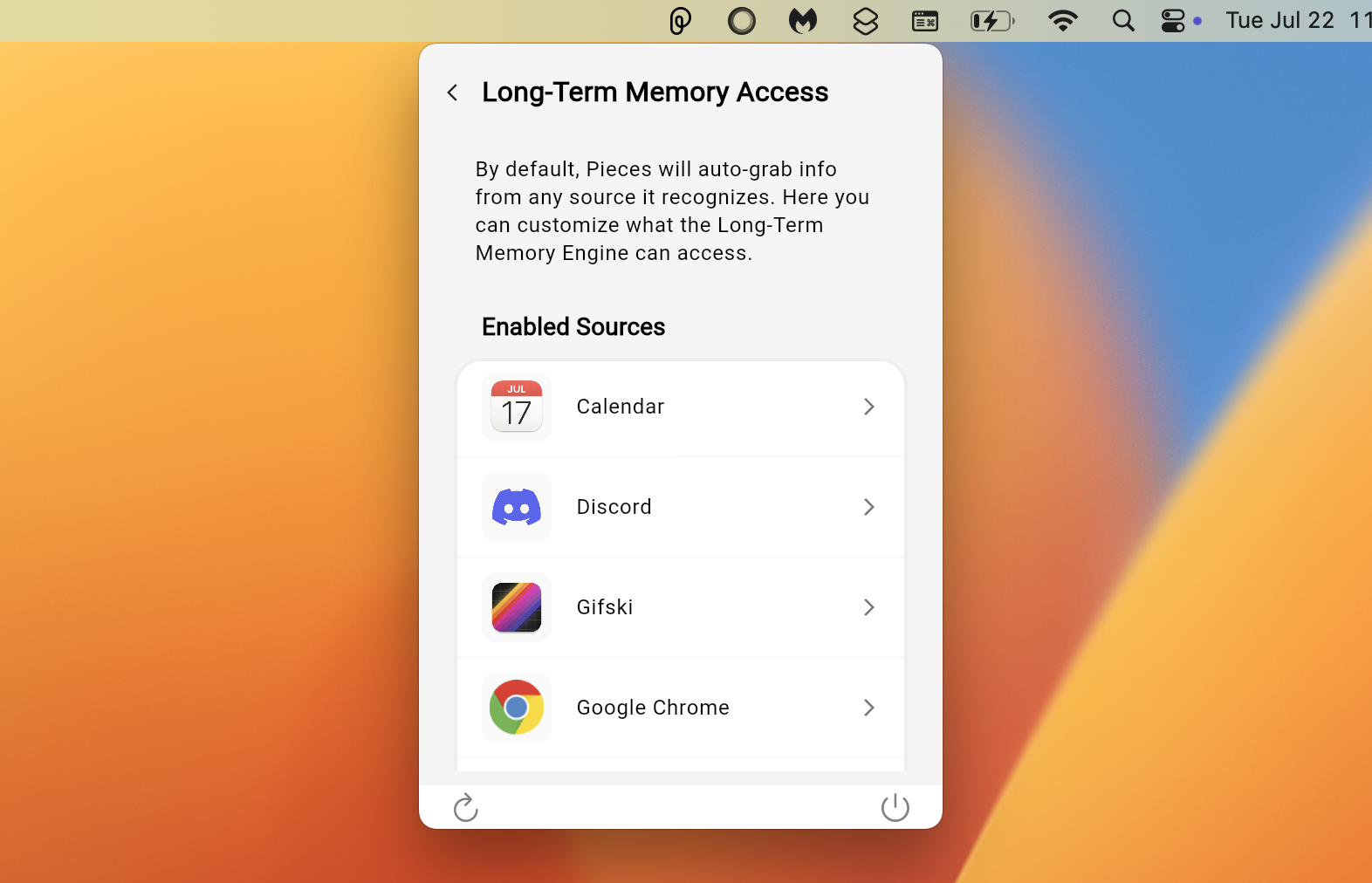
- Disabled Sources
Apps or sources that LTM is blocked from accessing appear here.
Click the Add button to open a Finder (macOS) or Folder (Windows) window, where you can manually select additional applications to allow memory capture.
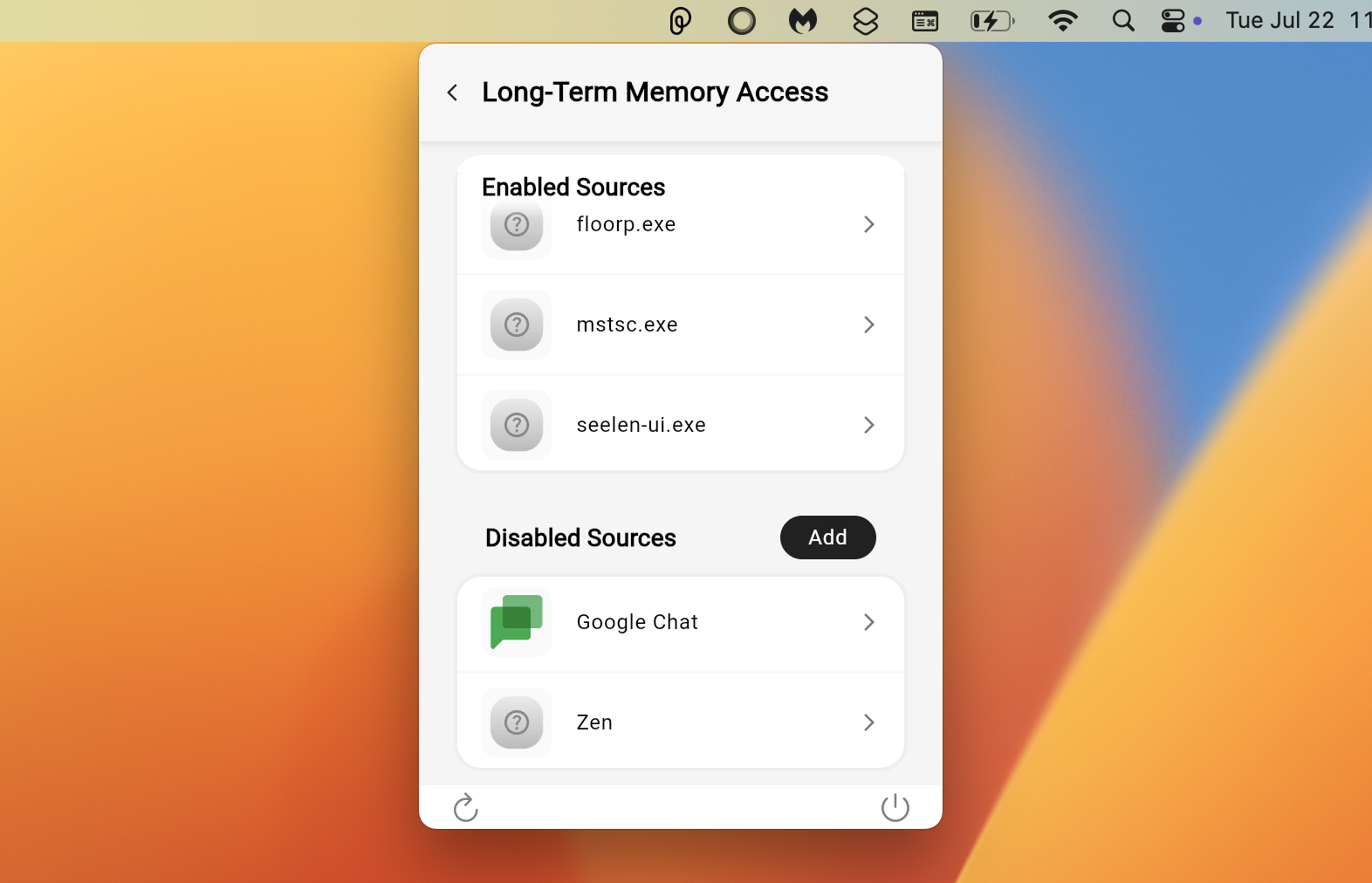
MCP Menu
Pieces is fully integrated with MCP functionality and now ships with an in-house MCP protocol that passes workflow context captured by Long-Term Memory to your favorite IDEs, such as Cursor, VS Code, and more.
You can find the SSE endpoint URL for creating your own Pieces MCP instances, as well as links to related documentation, in the Model Context Protocol (MCP) Servers menu.
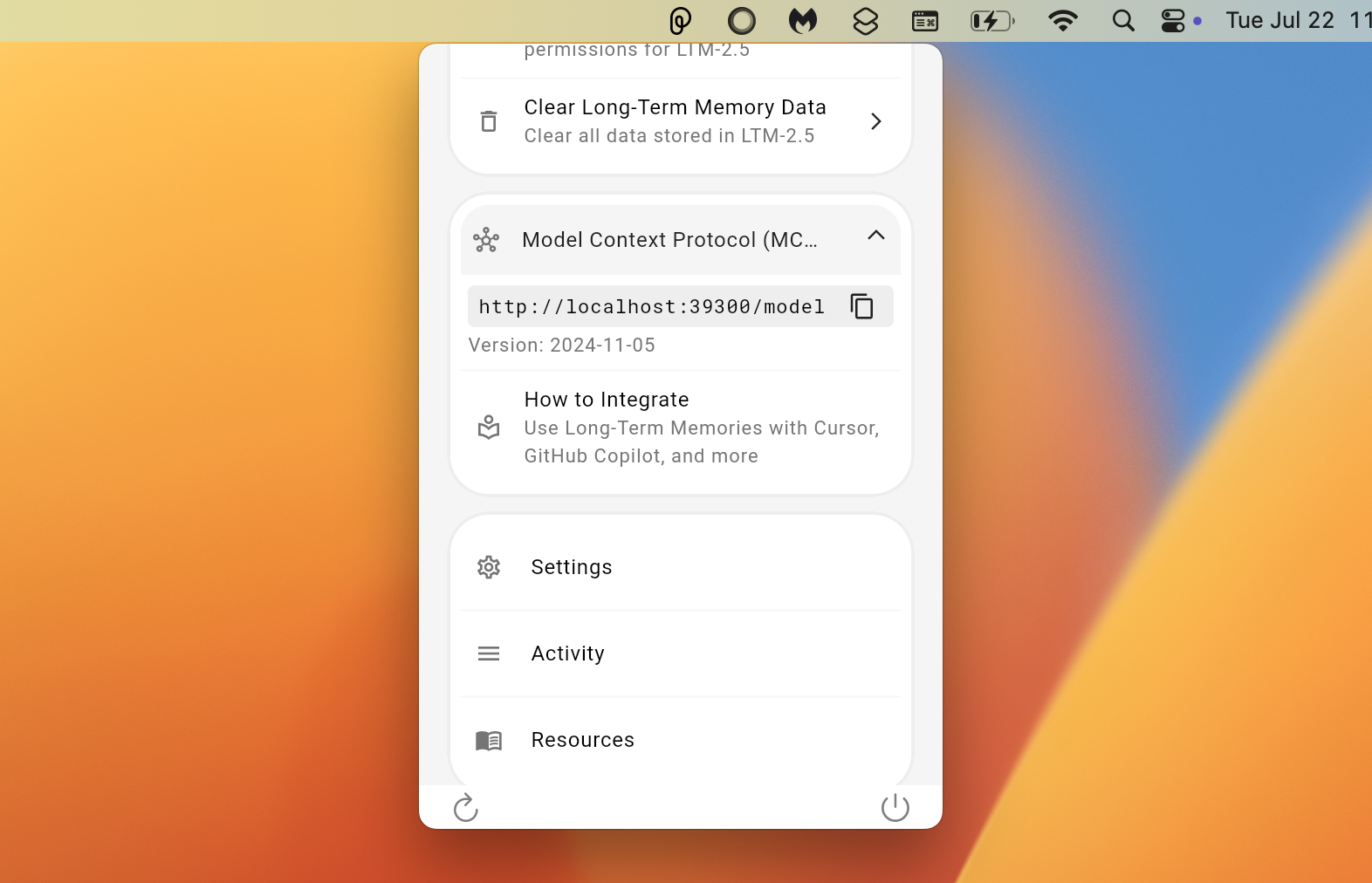
Settings
The Settings menu allows you to configure PiecesOS to best suit your workflow.
Optimize Memory Usage
Adjusts memory allocation for PiecesOS to reduce resource consumption while maintaining performance.
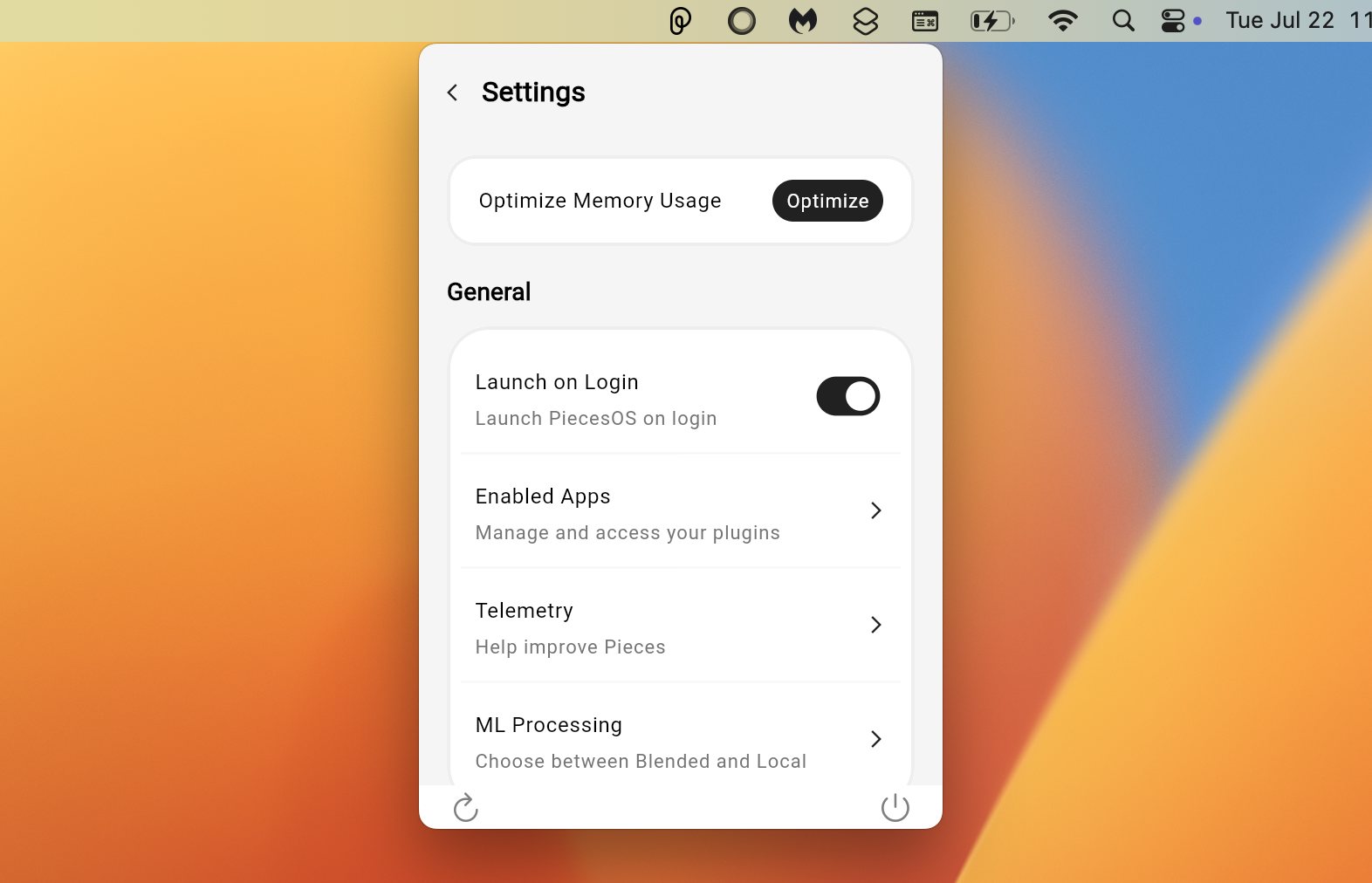
Launch on Login
You can enable or disable automatic startup for PiecesOS when your computer boots up.
Enabled Apps
View a list of applications that have Pieces plugins and extensions installed.

Telemetry Sharing
Enable or disable telemetry data collection on an individual application, plugin, or extension basis.

ML Processing
This menu controls how PiecesOS manages AI model inference. You can use Blended Mode or Local Mode to switch between using a combination of local and cloud-based LLMs for performance, or purely on-device processing with no cloud dependencies.
You can also make changes to the enrichment to level and type to individual applications for more fine-tuned control.

Activity
The Activity menu provides a log of recent actions and interactions within PiecesOS, such as:
Most Recent Copilot Chat: Displays the last Copilot conversation timestamp.
Most Recent People: Lists recognized people based on saved materials and shared code.
Most Recent Websites: Shows the last visited web pages that PiecesOS captured. Each website is listed with a clickable URL

Resources
The Resources provides quick access to documentation, support, and community links:
* <a target="_blank" href="/">Documentation</a>
* <a target="_blank" href="/products/support">Support</a>
* <a target="_blank" href="https://x.com/getpieces">X</a>
* <a target="_blank" href="https://www.linkedin.com/company/getpieces">LinkedIn</a>
* <a target="_blank" href="http://github.com/pieces-app">GitHub</a>
* <a target="_blank" href="https://www.youtube.com/@getpieces">YouTube</a>

Linux
The Pieces Quick Menu on Linux contains several helpful resources and links, such as:
Discoverer Integrations: Opens the Pieces website, where you can find all Pieces browser and IDE extensions and plugins.
About: Launches the About page for Pieces.
Documentation: Brings you to the official Pieces documentation, where you can browse through guides and troubleshooting information for the entire Pieces Suite.
Submit Feedback or Issues: If you're experiencing an issue, click this button to open a webpage with a form for submitting bug reports or providing feedback. You can also visit our Support page here to do so.
Optimize Memory Usage: Adjusts memory allocation for PiecesOS to reduce resource consumption while maintaining performance.
Quit: Quits PiecesOS. To relaunch, open your terminal and type
pieces-osand pressenteror find the PiecesOS launcher from your application tray.
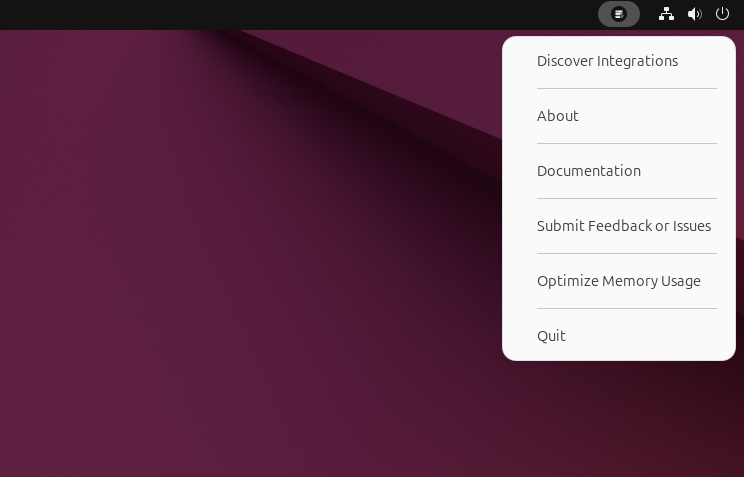
As a background resource task, there are currently fewer adjustable actions, but LTM Pieces Drive and Pieces Copilot can still be accessed and utilized within Pieces plugins and extensions on Linux.